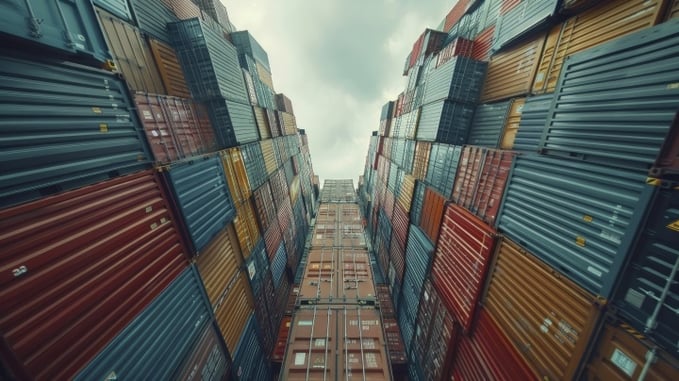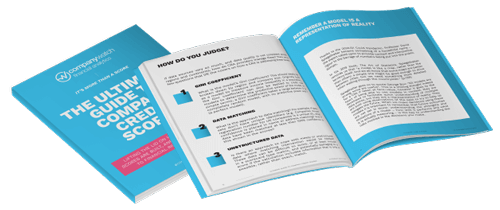Be Aware of These Top 5 Supply Chain Risks In 2024

Years of turbulent political and economic upheavals have shaken global supply chains. With escalating conflicts and widespread uncertainty, 2024 looks set to be more of the same.
How well do you know your suppliers? Can they withstand another challenging year?
We spoke with Philip King to find out the top 5 supply chain risks you need to be aware of in 2024, and how Company Watch can help mitigate these risks. Philip King has 46 years of credit management experience, including 26 in front-line operational roles, 14 as Chief Executive of the Chartered Institute of Credit Management, and 18 months as the interim Small Business Commissioner for the UK.
Follow Philip King on LinkedIn

1. Supply shortages
New border inspection charges
The government introduced new biosecurity inspections on food, animal and plant products entering the UK in April. While these changes are intended to protect our ecosystem from disease, the implementation has caused concern for UK businesses. The Cold Food Federation has outlined major challenges with the new rules for temperature-controlled plants and animal products, including:
- Concerns over food safety being affected by delays
- Up to £1000 added cost per multi-consignment lorry entering the UK
- Increased product prices to cover these costs
- Delays and disruptions hiking up costs and prices
These new inspections have been called an ‘existential threat’ to fruit and flower growers in the UK. UK flower and fruit growers rely heavily on EU imports of young plants. Rising costs, delays and damage done during the inspections could push businesses to insolvency. These issues may result in European businesses ceasing trade with the UK. The knock-on effect could cause serious supply chain shortages for your business and the economy.
Extreme weather
We experienced heavy rain in the UK over the spring. As a result, many farmers could not plant potatoes, vegetables and wheat. Meanwhile, a drought across Morocco means fewer imports. In 2023, more than 1⁄3 of our tomatoes and 2⁄3 of our raspberries came from Morocco.
Another extreme drought across Panama has caused serious disruption to global supply chains. Around 40 million tons of goods pass through the Panama Canal every month. Reduced water levels have prevented around 15 million tons from passing through the canal this year. Rerouted ships face six extra days of travel and skyrocketing prices. Trade in the Panama Canal dropped by 32% in the first two months of this year.
As extreme weather events continue to wreak havoc across the globe we’re likely to see more supply shortages in future.
2. Vulnerability of suppliers
The threat of insolvency continues to be a key threat to your business and the UK economy. With 50,000 businesses at risk of collapse in 2024, you must be vigilant up and down your supply chain. The latest stats show that company insolvencies increased 18% in April compared with March 2024 - 18% higher than April 2022. The continued high rates of insolvency may be due to several factors:
- High interest rates inflated the cost of borrowing
- High levels of inflation leading to a cost-of-living crisis
- Expensive debt led to an increase in “zombie companies” barely surviving (there are currently 259,849 of these companies in the UK)
- Soaring energy prices in 2022 remained high, crippling SMEs
If a company in your supply chain collapses you could be at risk. Are you prepared?
3. World conflicts
Intensifying conflicts between Ukraine and Russia, and Israel and Palestine have contributed to ongoing global supply chain shortages. At the end of 2023, Houthi rebels in Yemen began attacking ships en route to the Suez Canal in response to Israel's continued campaign in Gaza. This has wreaked havoc on global supply chains:
- Ships forced to reroute around Cape of Good Hope, at the tip of South Africa added as much as two weeks onto their journeys.
- Trade in the Suez Canal plummeted by 50% in the first two months of 2024.
- Since October 2023, the cost of shipping a 40-foot container from China to Europe has increased from an average of $1,200 to $7,000.
- 65 countries and 29 major shipping companies have been affected by the Houthi strikes in the Red Sea.
As the war rages on in Russia and Ukraine, supply chain disruption continues. Both nations are important links in global supply chains and supply shortages look set to continue across industries:
- Russia and Ukraine combined account for around 30% of global supplies of wheat, 35% of barley and 75% of sunflower oil. The conflict continues to cause global food shortages and rising prices.
- Ukraine is a significant supplier of raw materials used in tech, medical companies, and automotive. These industries are facing shortages.
- Companies are being forced to discontinue products as they can’t access materials, potentially putting them out of business.
4. Economic uncertainty
You should be prepared for economic instability to continue for the remainder of 2024. While we narrowly avoided recession, the geopolitical landscape remains tumultuous. 56% of economists expect the global economy to worsen this year.
Volatile financial markets and upcoming US and UK elections have created an atmosphere of uncertainty. It is difficult to know what new trade, labour and economic policies a new government might enact, and how these will affect your business and the supply chain.
Economic uncertainty usually leads to businesses becoming more risk-averse and holding off on investments. Consumers become more cautious, and recession is more likely. You need to be aware of how these changes might impact your customers, suppliers and your business.
“What businesses need is a state of equilibrium. At the moment they have the opposite. With the election and other geopolitical factors, UK businesses are stuck in a state of uncertainty.”
Philip King
5. Inflation and rising costs
Inflation has finally hit the Bank of England’s 2% target, but interest rates remain at a 16-year high at 5.25%. What does this mean for your business?
- Prices continue to rise and put pressure on your supply chain.
- Consumer demand for goods and services shrinks as they have less disposable income.
- As material, labour, energy and transportation costs increase, it is more expensive to manufacture, ship and store goods.
- Planning and forecasting product demand, supply chain resources and cash flow becomes challenging.
- The high cost of borrowing could push businesses in your supply chain to insolvency
“The big banks lending appetite to smaller businesses is reducing even further. The cost of borrowing is more expensive, so you need to consider that the businesses in your supply chain are paying more and could be struggling.”
Philip King
Follow us on LinkedIn for the latest news and updates

Know Your Supplier
You’ll be well aware of how important it is to Know Your Customer, but how well do you know your suppliers? It is vital that you actively manage your supplier risk throughout your relationship. If one of your suppliers fails, or one of their suppliers fails, the domino effect up and down the supply chain can be devastating.
“Knowing your supplier is vital. If they suddenly collapse, where does that leave your business? If a new supplier is much more expensive could you survive? If you use a supplier with a unique product and they collapse, are you left in a tricky situation? These are the questions you need to be asking.”
Philip King
Company Watch to the rescue
We’re here to help. At Company Watch we work with some of the biggest procurement departments in the UK helping them manage their critical suppliers and reduce supplier risk. We’ve created an arsenal of tools and solutions to futureproof your business against supply chain risk.
|
Tool/ Solution |
How it mitigates supply chain risk |
|
Our Companies House search engine exposes supply chain weakness by searching for keywords indicative of risk. It flags high-risk companies before you introduce them into your supply chain. |
|
|
This tool is designed to give you a full picture of a supplier's financial health. It predicts around 90% of UK public insolvencies in advance. |
|
|
(Risk modelling) |
Forecast View™ lets you simulate a range of economic shocks to your supply chain. Explore how suppliers would fare in a range of future economic scenarios such as 'key customer insolvency' or 'margin squeeze'. |
|
Dig deeper with Experiments - enter your own data and create tailor-made scenarios so you can see exactly how it would affect your supply chain. |
|
|
This tool lets you match directors to their companies, even if this information is hidden. Get a better idea of who you are going into business with before you take on a new client or supplier. |
These are just a few of the tools you have at your disposal when you protect your business with Company Watch.
We believe our tools are the best on the market - but don’t take our word for it. Arrange a free trial today and ensure your business is safe from supply chain risks.

